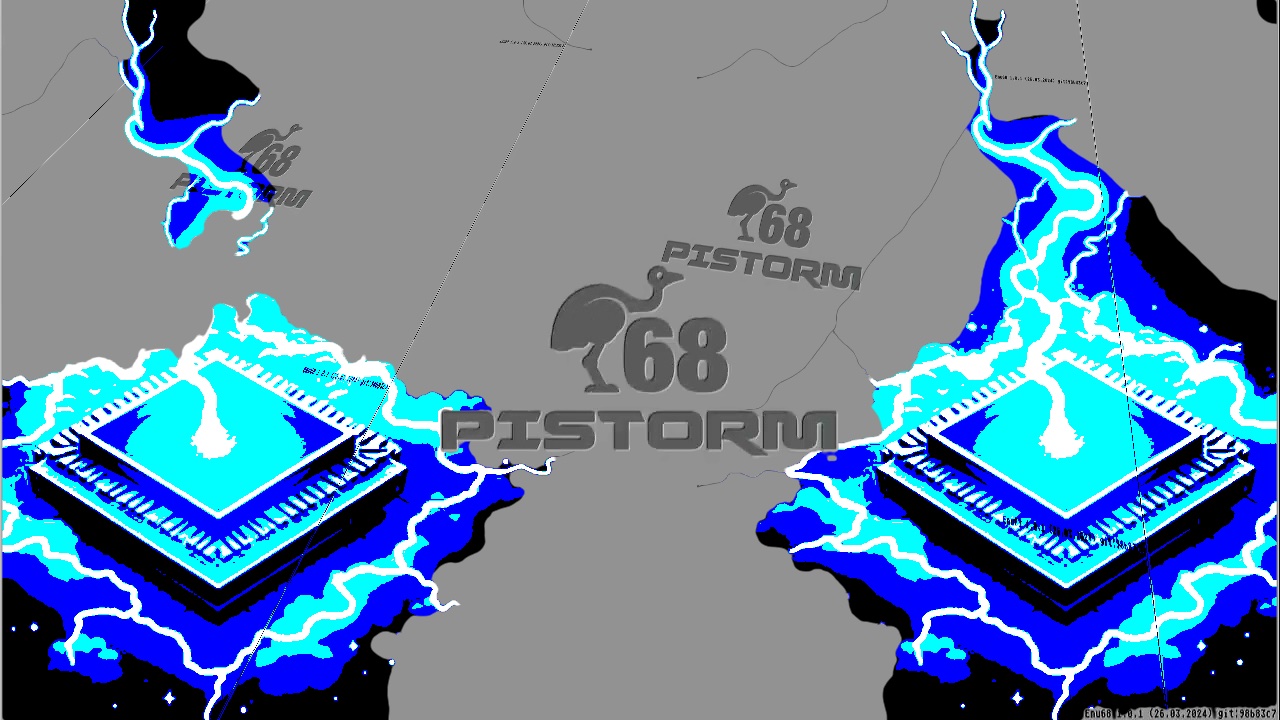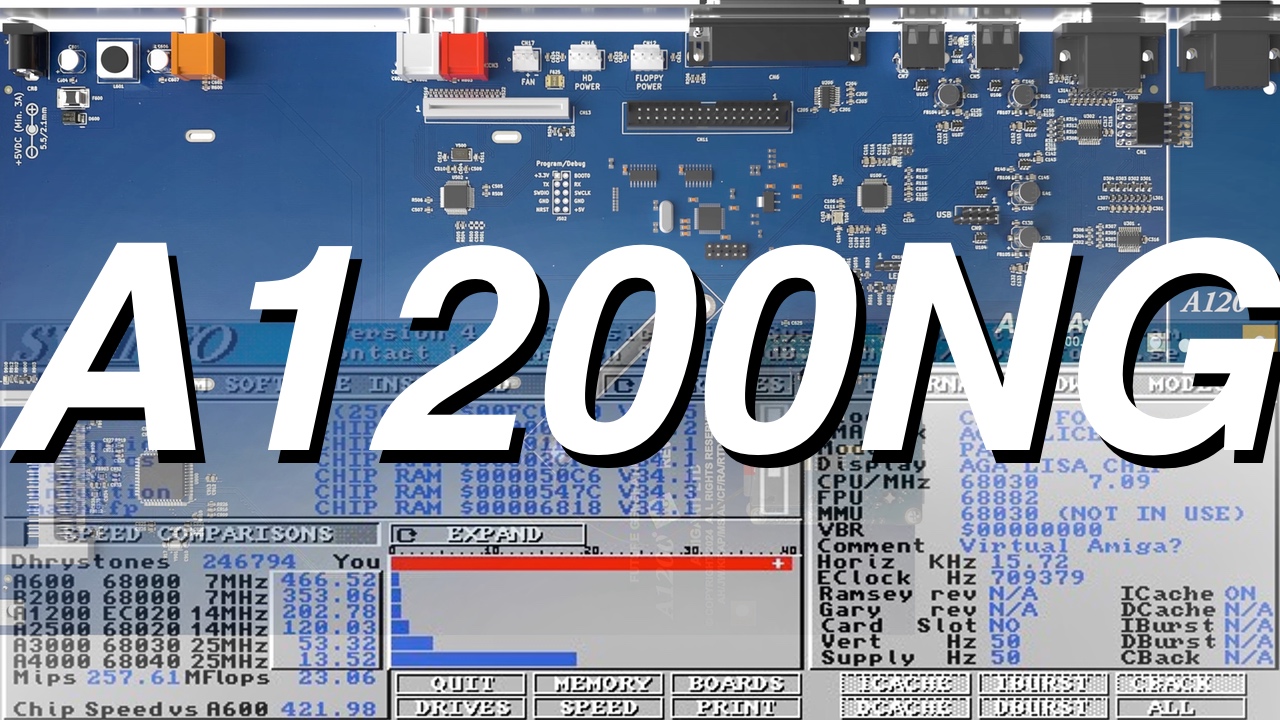The 80’s era was over. 1989-1990 was alive, and so Amiga, Atari and Apple delivered 68030 monster machines. In this article we compare Amiga 3000, Atari TT030 and Macintosh IIci 030 computers. The Mac machine is a 68030 machine which is from 1989, got same specs as the Amiga and Atari. But Apple didn’t care about the costs then as today. The price differences between these competitors at that time was huge.
The 68030 CPU line from Motorola was used in several machines at that time, but here we compare all of SCSI based home computers. They also have quite similar specs, but at the same time others are not and because of this differ a lot and a wonder how Commodore and Atari could screw things up so badly!? They’ve could both have been strong names today, if they did the right moves in 1990 for sure. Here we look at these monsters, but important computers that actually changed the computer industry a lot.
Atari TT030 and Amiga 3000 also tried to introduce UNIX to the people. Atari promised UNIX to be released at launch, but it took 2 years before it was actually released. Commodore launched Amiga 3000UX with Amix (Commodore UNIX). These giants sure made impact for sure and because of their price and functionality should have been much more loved back in the days. The Mac also had UNIX possibility since 1989, but because of the price you had to pay for the machine it wasn’t a affordable like A3000 or Atari TT030.
Cost, Performance and Looks in an Epic versus Battle
It is a bit unfair to compare these regarding the price, as 68030 CPU’s became cheaper later. But the price at just $8798 for a Macintosh IIci is just insane high (even if we say that Apple’s products is high priced even today). Amiga 3000 was launched at a price of $3379 which was quite stiff too, but much more affordable by working and business people at that time. The Atari TT030 had a price at $2995 which made it the cheapest one. So, what Atari did to not survive. Is an interesting question?
How Apple could survive with serving the public such expensive machine is beyond my understanding. The specs of the machine was quite high for the time, but the Amiga 3000 was miles ahead of it and especially the sound quality of Paula 8-bit custom chipset was still miles ahead of the competitors. The Atari TT030 desktop computer was on the other hand a bit cheaper when launched. However the specs of it said that the machine had 16 MegaByte of RAM as standard, which should have wiped out the competition if only AtariTOS (and the promised UNIX OS) were updated fully. What were Atari thinking??? There are some words about that Atari had issues with Atari TT030 at first;
The Atari TT030 was Atari’s crown jewel of computer systems up until the Atari Falcon030 became available 2 years later. However its a toss up between the two systems as to which one is better. Originally the Atari TT030 was to come with a MC68030 at 32Mhz and the units initial run was done with those processors and that speed. However problems plagued the initial run and 32mhz processors were swapped out and 16mhz version were put in there place. The later run of TT030’s did have issues resolved and were sold in the 32Mhz version.
Cheaper and Better almost defeated the Expensive Mac
The time in 1990 was a bloody race at the Motorola side of CPU’s. Both Commodore and Apple managed to launch cheaper 68030 and 68040 machines later on, but in 1990 all 3 companies actually competed themselves to a death sort of. Apple just survived because of their brilliant iPod launch later. Commodore even managed to release a 68030 version of Amiga 4000 that was way cheaper than the 68040 version. Still Commodore went down. Atari finished the Atari TT development totally in 1993 and so their desktop computer era was over. Atari Falcon030 lasted a bit more, but its rather seen as a Amiga 1200 competitor.
Mac is still Expensive today as it Was back in the days
The prices of these machines is taken from the year they were launched. Todays currency isn’t taken into those numbers. Here I wanted to show the differences at the time of 1989-1990. The point of this article is to try to get a glimps of these machines that were huge competitors in 1990. With PC line on the side that just took of, it is now a bit shock to see both Atari and Commodore no longer with us. Both of these had specs at the same level of Apple’s.
Mac was however very expensive at that time, but even today Mac is still as expensive. However today they have design that makes people buying their laptops and iMacs. At that time, it is clearly that Amiga 3000 was and still is looking good even today. The design that Commodore made was timeless and shows how far Commodore was at their design. Only if they didn’t collapse in 1994. What if we could change the history today?
Our fair Conclusion is that Amiga 3000 was the most Expandable computer
Comparing all of these 68030 beasts, Amiga 3000 is the one that is most expandable even today. Elbox is a company that have made PCI Expansion Possibilities for the machine even. Zorro III was for a long time a very nice expandable system made by Commodore. You can actually install a cheap ATI Radeon 9200 card if you want and get 3D support also etc. The Zorro III expansion possibility also gave A3000 PC Emulators, Mac Emulators, Sound cards and also Ethernet cards.
Purpose of this article
With this article I tried to view how it was in 1989-1990. Apple released way more 68k Macs later that was way cheper, but still they kept quite high price tag. You could say that Amiga 4000 030 and Macintosh LC III 030 would be rivals from 1992 etc. Atari gave up the TT line in 1993 and Commodore final machine was the Amiga 4000T.
Purpose of this article is to show the differences of these machines at a time all of these had high expectations for their future. However different decisions by different CEO’s made Atari and Amiga loose it. What if everything ended in a different way? How would the world have been today?…
Source
unix on 68k mac (Wikipedia)
everymac.com
oldcomputers.net
atarimuseum.com
wikipedia.com





